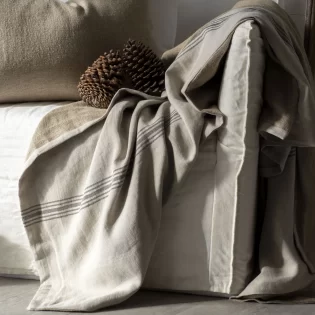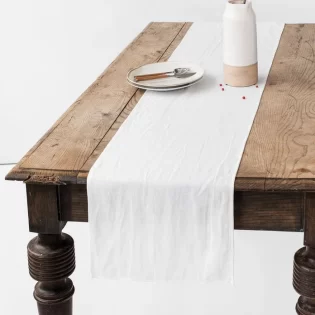
In this Article
Share
Slide into a curved corner seat in any classic French bistro and you’ll likely find yourself on a banquette — that elegant, upholstered bench seating that has become as iconic to Parisian interiors as zinc countertops and tiled floors.
Long before it became a staple of stylish cafés and clever small-space design, the banquette was born out of practical necessity. In 19th-century Paris, interior spaces became narrower, and floorplans more vertical. Parisian café owners needed seating that could accommodate multiple guests along a wall, maximise limited space, and add a touch of comfort to the city’s famously small dining rooms.
Design Solution
The solution? A continuous built-in bench — usually velvet or leather, often tufted, and nearly always red.
By the early 20th century, the banquette was a fixture in French social life — from Montparnasse literary salons to smoky jazz bars. It was democratic by design: intimate enough for a quiet rendezvous, efficient enough for busy lunch service, and stylish enough to endure the decades.
Modern Popularity
Today, the banquette has moved far beyond the bistro. It’s a favourite of interior designers and architects looking to bring softness and sophistication into living rooms, kitchen nooks, entryways, and even bedrooms. Whether upholstered in vintage French linen, boucle, or moody velvet, the banquette is beloved for its ability to blend utility with elegance — a seat, a backdrop, a statement.
In modern interiors, it often signals a slower rhythm: a place to pause, linger, sip something warm. And in true French fashion, it marries comfort with effortless style.
Franca Brasserie
One of the most striking contemporary examples of the banquette’s enduring beauty can be found at Franca Brasserie in Sydney’s Potts Point. There, curved banquettes sweep gracefully around the dining room in deep, jewel-toned hues — a modern homage to the grand Parisian bistro. Their leather finish and generous scale invite a slower, more indulgent kind of dining, while their sculptural form adds architectural elegance to the space. It’s a reminder that the banquette is more than just seating — it’s theatre, intimacy, and design in one gesture.

Origins of the word Banquette
- French: banquette
Literally means a small bench or raised seating platform. - Italian origin: banchetta
A diminutive of banca, meaning bench — which also gives us the word bank, interestingly, because medieval bankers sat on benches in markets!
So banquette essentially means “little bench”, and historically refers to:
- A small upholstered seat built along a wall
- A raised step behind a military parapet
- Even a footrest or ledge in older architectural use
By the 19th century in France, the term came to be associated with the built-in bench seating found in carriages, cafés, and homes — eventually becoming the cozy, curved restaurant banquette we know and love today.
“
From banca to banquette — the little bench that became a symbol of French elegance.
Photographer: Karen Miles
Recommended from Shop
Some of our favourite picks from the latest seasonal collection!
Next Articles

The 170-Year-Old Wallpaper Hidden in Our Heritage Cottage Walls
When we began restoring our heritage cottage, Petit Château, we expected a few surprises. But we never imagined the stories that would be told through the layers of wallpaper hidden beneath modern plasterboard.

Could This Be the Cosiest French Consul Collection Yet?
Discover French Consul’s Winter Drop: a limited collection of pure linen cushions, throws, and tabletop pieces in soft chocolate, caramel, and rustic textures — inspired by the French Alps and made for a season of slow, beautiful living.

How I Plan a Renovation: The Tools That Keep Me Organised & Inspired
So, you’ve bought a property to renovate. You’ve picked up the keys. Now what? Where do you begin with planning the interiors or working out your build?





Great tips! I’ve just discovered your Youtube channel, and I love it! Thanks for sharing your content and the day and life of a designer.
Thanks so much for the tips both in the blog and on your YouTube channel. As a new Interior Design student, I find them to be incredibly helpful, interesting, and inspirational. Keep up the great work!
I love reading your blogs and watching your video. I am really impressed by the way you are doing business and I am just inspired by it!